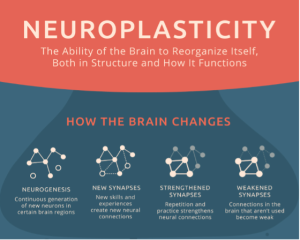As exercise physiologists, we encounter a diverse array of challenges, and our toolkit is equally diverse. One rapidly advancing tool in our repertoire is neuromuscular rehabilitation. This week, we’ll explore what neuromuscular rehabilitation is, how it works, and what it might look like for those seeking to optimise their recovery.
What is “Neuromuscular Rehabilitation”?
Neuromuscular rehabilitation is a specialised area that focuses on restoring and optimising the neuromuscular system’s function. This system includes the nerves, muscles, and their intricate interplay. The primary goals of neuromuscular rehabilitation include:
- Improving Motor Control
- Restoring Sensation
- Enhancing Muscle Function
- Reducing Pain
How Does Neuromuscular Rehabilitation Work?
Neuromuscular rehabilitation leverages neural plasticity – i.e. the brain’s capacity to reorganise and adapt by forming new neural connections.

When injuries or neurological conditions disrupt neural pathways, the brain adapts by reconstructing damaged pathways or finding alternative routes for neural signals, ensuring proper muscle function. In practice, this process involves patients engaging in task-specific exercises that challenge the brain and create new neural connections, similar to building new “roads” for improved motor control. Furthermore, enhancing the mind-muscle connection is vital; it entails consciously focusing on specific muscles during exercises, akin to a pianist honing their skills by concentrating on individual keys. Isolation exercises and biofeedback devices further enhance coordination and muscle control.
In essence, neuromuscular rehabilitation empowers individuals by tapping into the brain’s adaptability, rebuilding neural pathways, and enhancing the mind-muscle connection. Big science words aside, if we step back, this whole process really is amazing – the remarkable potential of the human body and brain to heal and adapt.
Who Benefits from Neuromuscular Rehabilitation?
Neuromuscular rehabilitation has the potential to benefit a wide range of people; it’s something as EP’s we pull out a lot! It’s ideal for individuals recovering from injuries, surgeries, or grappling with various neurological conditions that affect their muscle function. Whether you’re a client, a claimant, or someone seeking to regain neuromuscular control, this rehabilitation can offer significant support.
Common beneficiaries include stroke survivors, who find it instrumental in relearning motor skills and improving coordination. It also proves beneficial for individuals with conditions like neuropathy, multiple sclerosis, or Parkinson’s disease, enhancing their overall quality of life by addressing movement and coordination challenges.
If you have someone in mind who could benefit from neuromuscular rehabilitation, don’t hesitate to reach out. Making a referral now can be a crucial step towards their recovery and improved quality of life.
Author: Tessa Nielsen
Clinical Exercise Physiologist and
Content Creator at Specialised Health
#exercisephysiology #exerciserehab #rehabilitation #lifeinsurance #incomeprotection #ctp #workcover #mobile #mobileexercisephysiology #fatigue #mentalhealth #cancer #musculoskeletal #injury #pain #physio #physiotherapy #Sydney #Brisbane #Melbourne #Adelaide #Auckland #Waikato #BayofPlenty #Wellington #Otago #Christchurch
